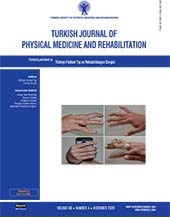Cost-effectiveness analysis of chronic mechanical back pain treatment modalities
Patients and methods: Between March 2011 and September 2011, a total of 105 patients (43 males, 62 females; mean age 44.8±12.7 years; range, 27 to 58 years) who were treated for chronic LBP were included in this prospective study. Of the patients, 34 received inpatient physical therapy consisting of electrotherapy, superficial-deep heat application, and basic back exercise program, 35 received the same treatment in the outpatient setting, and 36 received back school education. Each patient was evaluated five times during the study using pain intensity Visual Analog Scale (VAS), spinal mobility measurements (inclinometer), general evaluation (VAS), functional disability measurement (Roland-Morris Disability Questionnaire [RMDQ]), and quality of life (Short Form-36 [SF-36]). All expenses and costs for treatment of LBP were estimated.
Results: At the end of six months of follow-up, all study groups had a statistically significant improvement in all variables. Improvements in spinal mobility, RMDQ, and SF-36 scores were significantly higher in the inpatient physical therapy group (p<0.001). Direct and total costs were the highest in the inpatient treatment group and were the lowest in the back school education group (p<0.001). No statistically significant differences were observed in terms of additional cost of one-unit improvement in these variables among the study groups.
Conclusion: Our study results suggest that all three treatment modalities are effective in chronic LBP. In patients with LBP-related impairment in functional status and quality of life, inpatient physical therapy and rehabilitation should be preferred.
Keywords : Back school, cost-effectiveness, low back pain, physical therapy

















